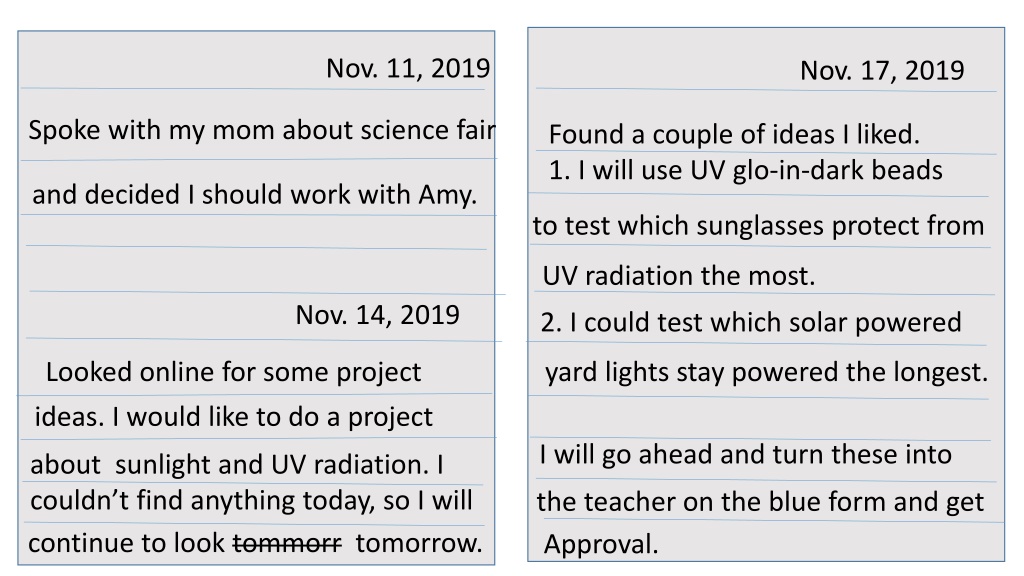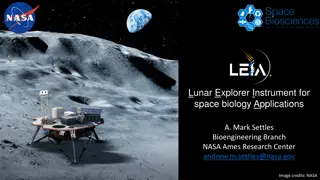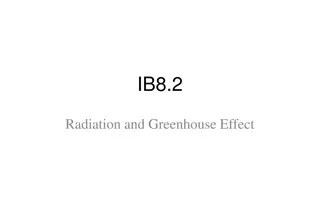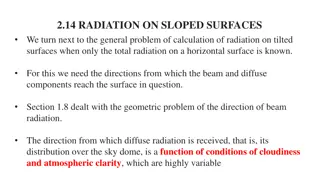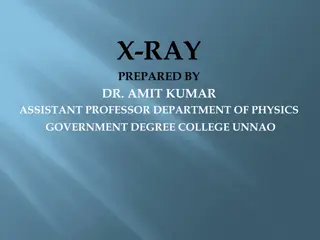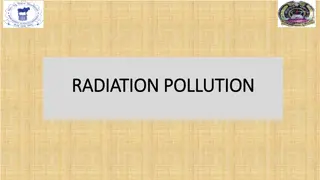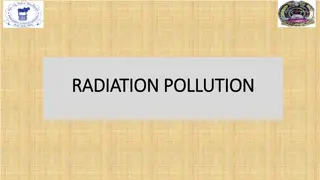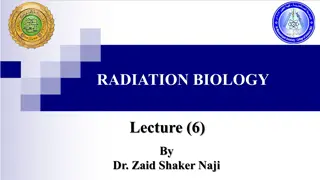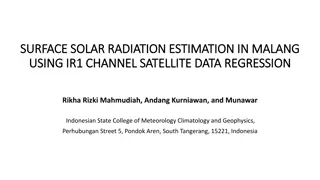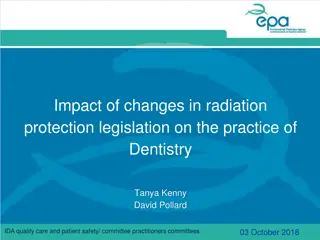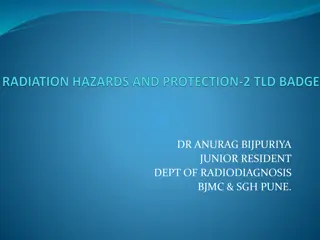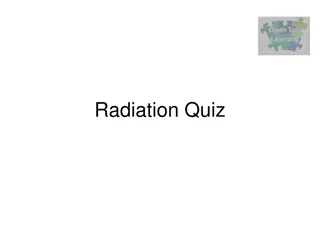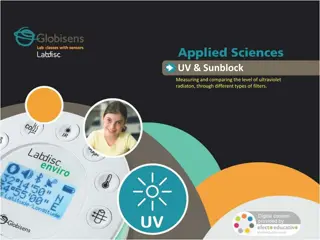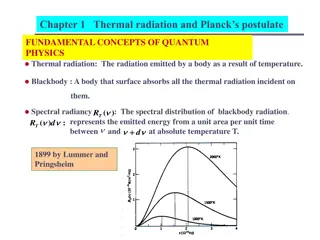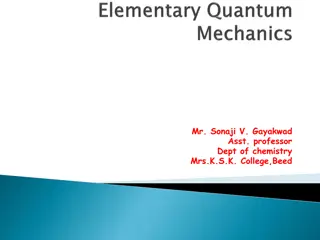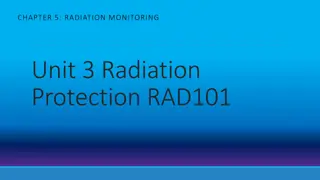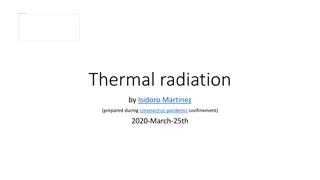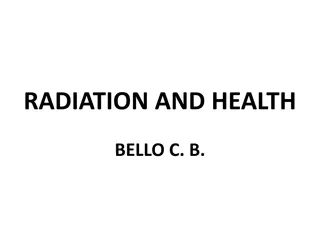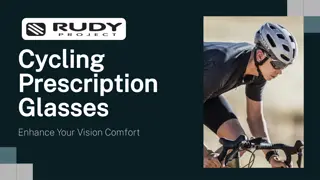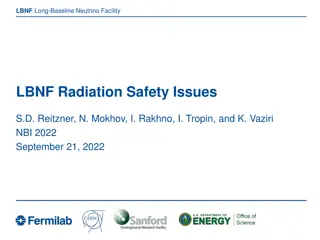UV Radiation Protection in Sunglasses
In this science fair project, the aim is to investigate which colored lenses of sunglasses offer the best protection against UV radiation. The project involves using UV glo-in-dark beads and various types of sunglasses to test their efficacy in blocking harmful UV rays. The background research includes information on the types of UV light, their effects on the skin, and the risk for skin cancer. Gathering materials and formulating a hypothesis are crucial steps in this experiment. Stay tuned for updates on the progress!
Download Presentation

Please find below an Image/Link to download the presentation.
The content on the website is provided AS IS for your information and personal use only. It may not be sold, licensed, or shared on other websites without obtaining consent from the author.If you encounter any issues during the download, it is possible that the publisher has removed the file from their server.
You are allowed to download the files provided on this website for personal or commercial use, subject to the condition that they are used lawfully. All files are the property of their respective owners.
The content on the website is provided AS IS for your information and personal use only. It may not be sold, licensed, or shared on other websites without obtaining consent from the author.
E N D
Presentation Transcript
Nov. 11, 2019 Nov. 17, 2019 Spoke with my mom about science fair Found a couple of ideas I liked. 1. I will use UV glo-in-dark beads and decided I should work with Amy. to test which sunglasses protect from UV radiation the most. Nov. 14, 2019 2. I could test which solar powered Looked online for some project yard lights stay powered the longest. ideas. I would like to do a project I will go ahead and turn these into about sunlight and UV radiation. I couldn t find anything today, so I will continue to look tommorr tomorrow. the teacher on the blue form and get Approval.
Nov. 19, 2019 Nov. 20, 2019 The teacher liked my first idea. Background Research So, my question is Which colored lens of sunglasses Source: What Is Ultraviolet Light? By Jim Lucas - Live Science Contributor September 15, 2017 Planet Earth protect against UV radiation the best? Ultraviolet light is a type of electromagnetic radiation that makes black-light posters glow, and is responsible for summer tans and
sunburns. However, too much exposure to UV radiation is damaging to living tissue. Electromagnetic radiation comes from the sun and transmitted in waves or particles at different wavelengths and frequencies. Source of Info: https://www.skincancer.org/risk- factors/uv-radiation/ Two types of UV light are proven to
contribute to the risk for skin cancer: Ultraviolet A (UVA) has a longer wavelength, and is associated with skin aging. Ultraviolet B (UVB) has a shorter wavelength and is associated with skin burning. While UVA and UVB rays differ in how they affect the skin, they both do harm. Unprotected exposure to UVA and UVB damages the DNA in skin cells, producing genetic defects, or mutations, that can lead to skin cancer (as well as premature aging.)
Nov. 23, 2019 Nov. 24, 2019 Today I am beginning to gather my materials. Looked on Amazon To get the UV beads and the different kinds of sunglasses. Hyptheisis Hypothesis: If I block the sun using the yellow Sun-Eze Glasses, the brown Sun-Eze lenses, And the mirrored Sun-Eze lenses, then the UV beads will react faster with The brown lenses because dark colors absorb more light and therefore will make the beads change faster. I will also need a timer. Data sheet Pencil
https://www.youtube.com/watch?v=7e5XU0HKFLA 15 minute cartoony one https://www.youtube.com/watch?v=-EJUAb6GdPw 101 ideas http://annahause-beaumont- ca.schoolloop.com/file/1346931109876/1250946424651/5796 6878890500526.pdf rubric
Scientific Variables Teacher Directions: Please Review this page with the class. Video Link (8 min.)
Variables, Constants, and Controls Read the given scenarios. Identify each required component. Scenario 1: A student is studying how far room temperature water would squirt out of a plastic milk carton when 4mm holes are punched at different heights from the bottom of the container. Independent variable: ________________________ Dependent variable: _______________________ Constants: ________________________________
Variables, Constants, and Controls KEY Read the given scenarios. Identify each required component. Scenario 1: A student is studying how far room temperature water would squirt out of a plastic milk carton when 4mm holes are punched at different heights from the bottom of the container. Independent variable: ___Height of hole__ Dependent variable: ____distance of water Constants: temp. of water, milk carton, size of holes
Scenario 2: A student is studying how long it takes a cat to react to different sounds played at the same volume each time. Independent variable: ________________________ Dependent variable: _________________________ Constants: _____________________________________________
ANSWER KEY Scenario 2: A student is studying how long it takes a cat to react to different sounds played at the same volume each time. Independent variable: types of sounds Dependent variable: reaction time Constants: cat, volume of sound
Scenario 3: A student is trying to find out which type of fertilizer is the best for getting a plant to grow as tall as possible. She is planning to keep all of the plants she is testing indoors, on the window sill of her classroom. Independent variable: ________________________ Dependent variable: _________________________ Constants: ______________________________________________ What could the student use as a control for this experiment? ____________________________________
ANSWER KEY Scenario 3: A student is trying to find out which type of fertilizer is the best for getting a plant to grow as tall as possible. She is planning to keep all of the plants she is testing indoors, on the window sill of her classroom. Independent variable: type of fertilizer Dependent variable: height of plant Constants: location, sun, water, pots, ruler What could the student use as a control for this experiment? A plant with no fertilizer
Constructing a Hypothesis Instructions: Identify the independent and dependent variables from the provided problem statements, then create an if then hypothesis statement. 1. Problem Statement: An increased amount of car accidents have occurred in the last year because of cell phone use while driving. a. Hypothesis: We think that using a new technology device in the car would eliminate the need for using a cell phone while driving and would decrease the amount of accidents. Independent Variable: _______________________ Dependent Variable: __________________________ Controlled Variables: _____________________________ Hypothesis Statement: __________________
Constructing a Hypothesis KEY Instructions: Identify the independent and dependent variables from the provided problem statements, then create an if then hypothesis statement. 1. Problem Statement: An increased amount of car accidents have occurred in the last year because of cell phone use while driving. a. Prediction: We think that using a new technology device in the car would eliminate the need for using a cell phone while driving and would decrease the amount of accidents. Independent Variable: new technology device Dependent Variable: the amount of cell phone-related accidents Controlled Variables: same amount of traffic, same time of day, same drivers, same cars Hypothesis Statement: If we create a new technology for use in cars that eliminates the use of cell phones, then the amount of cell phone-related accidents will decrease because it has been proven that distracted drivers have more accidents.
2. Problem Statement: The Indiana bat is an endangered species in our community. One of the reasons for this species endangerment is due to the urban sprawl and removal of their habitat. a. Prediction: Creating a protected area of ideal habitat for the Indiana bat will increase the number of species in our area. Independent Variable: ___________________________ Dependent Variable: _____________________________ Controlled Variables:_______________________________ Hypothesis Statement: _______________________________
ANSWER KEY 2. Problem Statement: The Indiana bat is an endangered species in our community. One of the reasons for this species endangerment is due to the urban sprawl and removal of their habitat. a. Prediction: Creating a protected area of ideal habitat for the Indiana bat will increase the number of species in our area. Independent Variable: protected area of ideal habitat Dependent Variable: the number of Indiana bats in the area Controlled Variables: same type of bat, same type and amount of food for all bats, same temperature of environment Hypothesis Statement: If we create a protected area of ideal habitat for the Indiana bat, then the number of species in that area will increase because they will have a stable, safe habitat to live.
3. Problem Statement: During the winter when the roads are icy or snowy, large amounts of salt are used to create safer driving conditions. The salt used on our roads is decreasing the quality of the roads and creating runoff that is not good for our environment. a. Prediction: After conducting research, our team will create a new ice- melting solution that will not harm the environment or the roads. Independent Variable: ___________________________ Dependent Variable: ____________________________________ Hypothesis Statement: ____________________________
Answer Key 3. Problem Statement: During the winter when the roads are icy or snowy, large amounts of salt are used to create safer driving conditions. The salt used on our roads is decreasing the quality of the roads and creating runoff that is not good for our environment. a. Prediction: After conducting research, our team will create a new ice- melting solution that will not harm the environment or the roads. Independent Variable: new ice-melting solution Dependent Variable: road conditions and quality of runoff Hypothesis Statement: If we create an improved ice-melting solution, then we will have better road conditions and less harmful runoff.
Scientific Method Group Project Instructions: Students will get in groups of 2-4. Give each group or pair one of the scenarios below. Ask the group to design an experiment to answer the experimental question. Students should identify a control group, dependent and independent variables and possible outcomes or what type of data would be gathered. Students will not actually be performing these experiments. Have students either turn in their design on paper or do a mini-presentation to the class. Does the wavelength of light (R.O.Y.G.B.I.V.) affect a plant s growth? Does tomato juice make hair grow faster? Is acid rain causing a decline of frog populations? Does the hormone estrogen increase the milk yield of dairy cows? Does the size of a fish tank determine how large a fish will grow? Does aspirin keep cut roses fresher longer? Will crickets chirp more if the temperature is warmer? Do wounds heal faster when they are covered by BandAids?
